Abstract
We have studied respiratory symptoms, smoking habits, chest radiographs, sickness absence, and pulmonary function among 258 welders and an equal number of matched control subjects in three engineering factories. Welders who smoked had a higher frequency of chronic phlegm production than control subjects but there was no difference in cough or dyspnoea. The frequency of abnormality on chest radiographs was low and similar in welders and controls. Upper respiratory infections were a more frequent cause of sickness absence in welders than in controls but no difference was found in other respiratory diseases. FEV1 and peak expiratory flow rate were similar in welders and controls. In a subset of 186 subjects the maximum expiratory flow rate at low lung volumes was significantly less in welders who smoked than in control subjects who smoked, but there was no difference in non-smokers. Welders working under these conditions in the engineering industry appear to have no increased risk of chronic obstructive lung disease.
Full text
PDF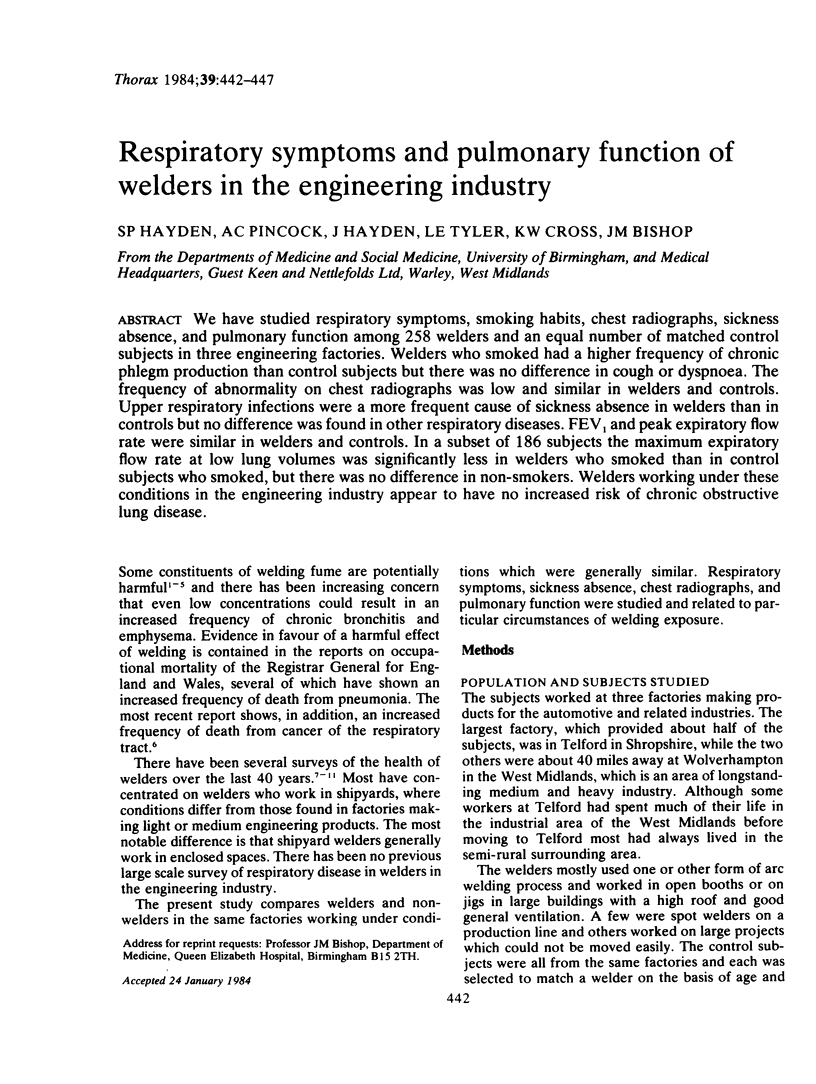
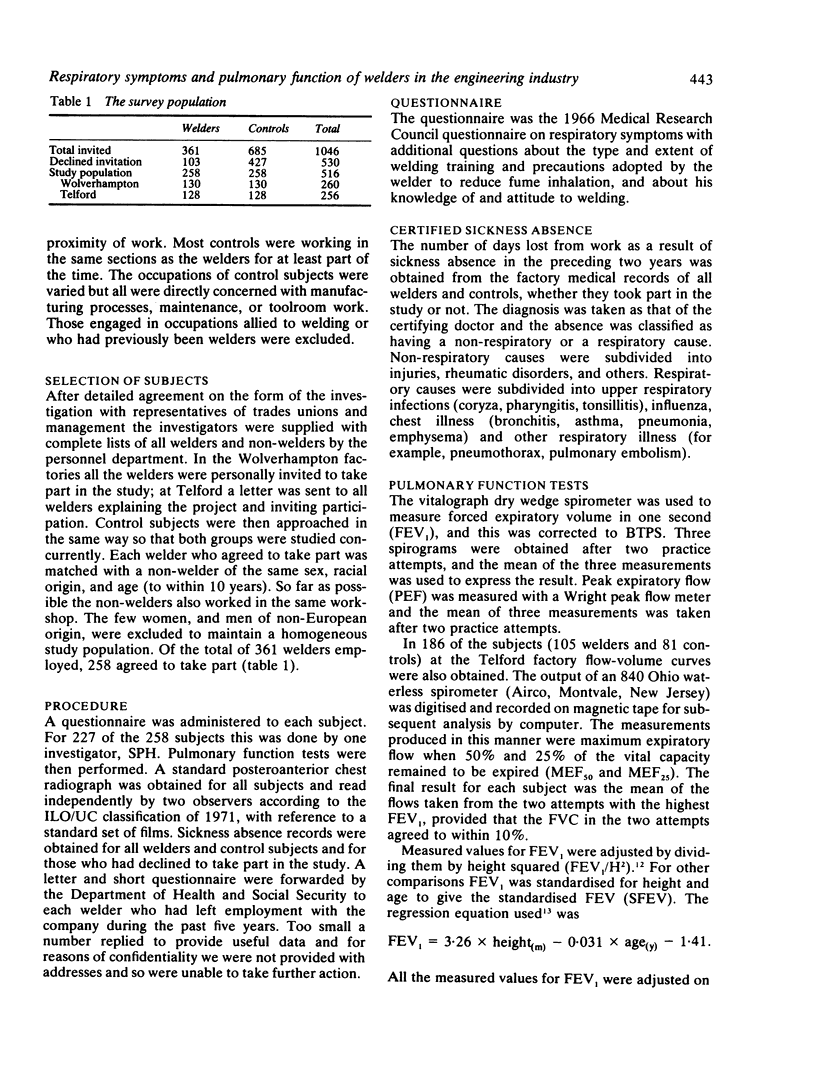
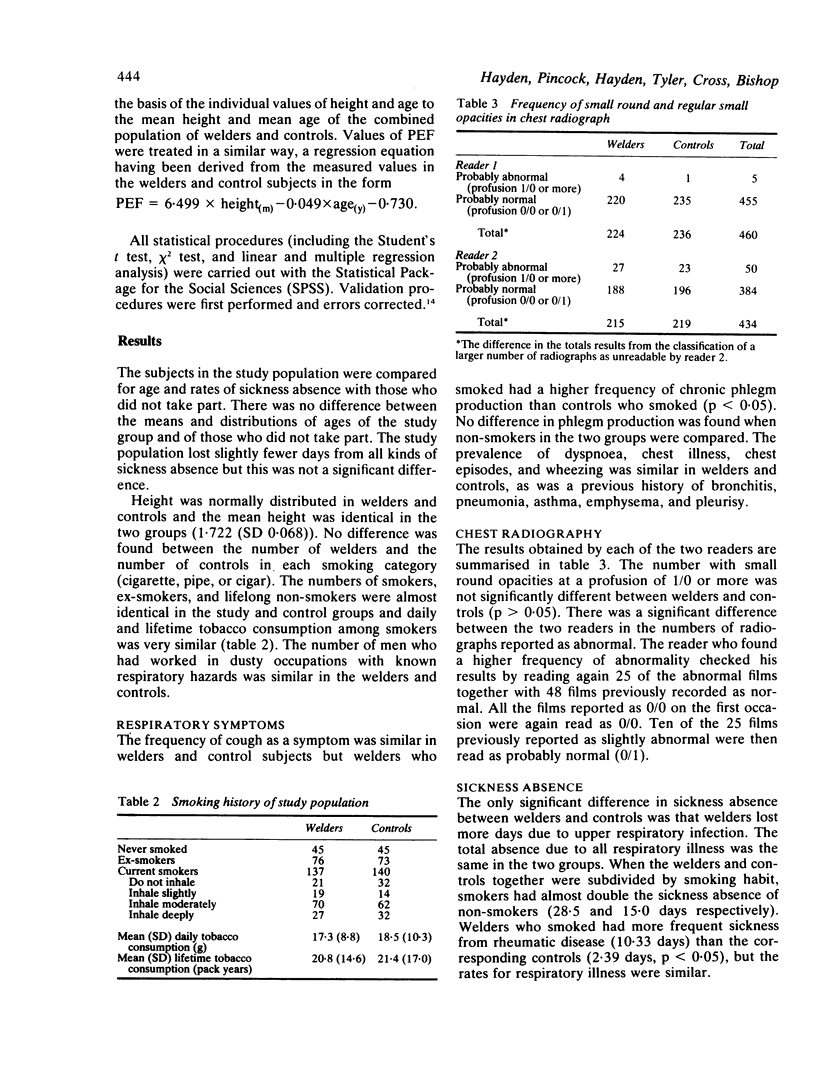
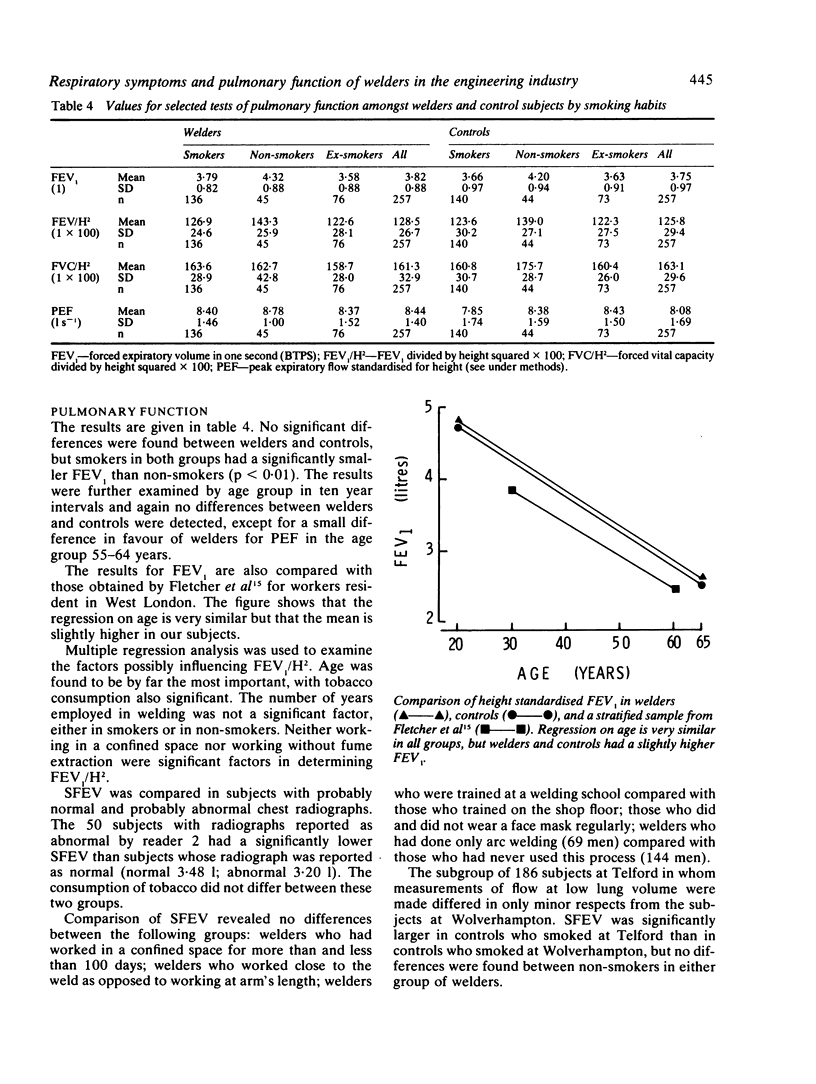
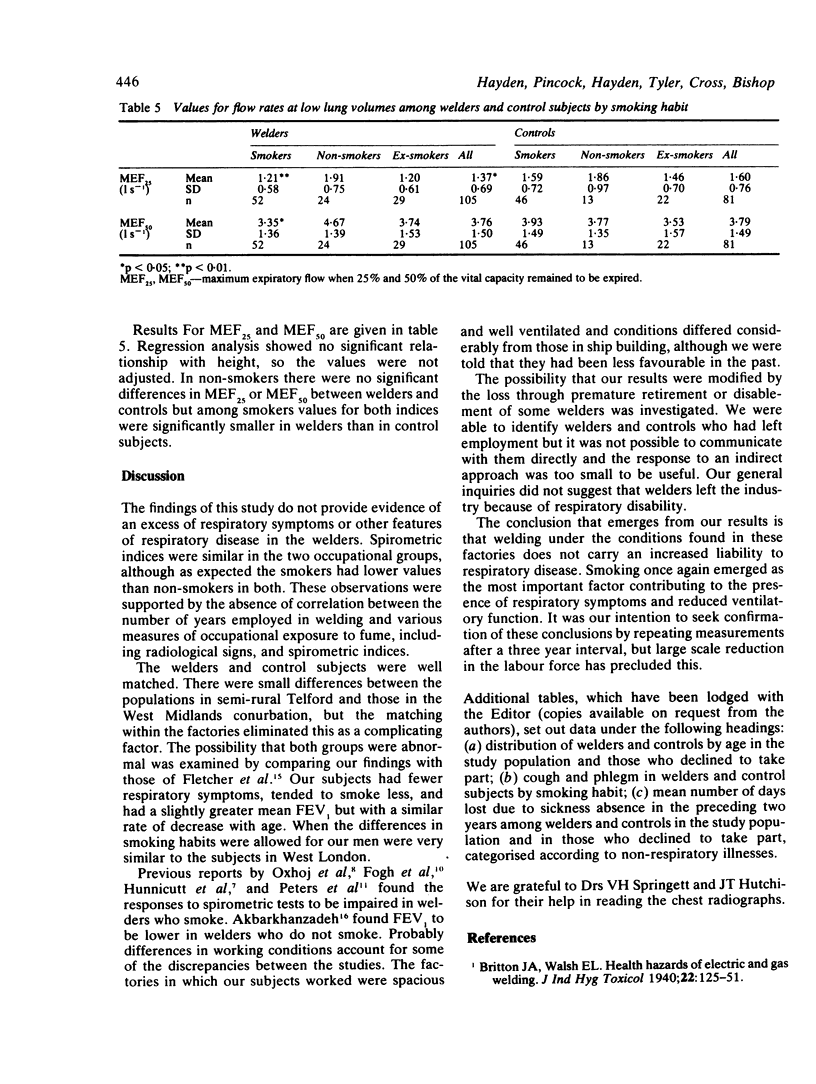
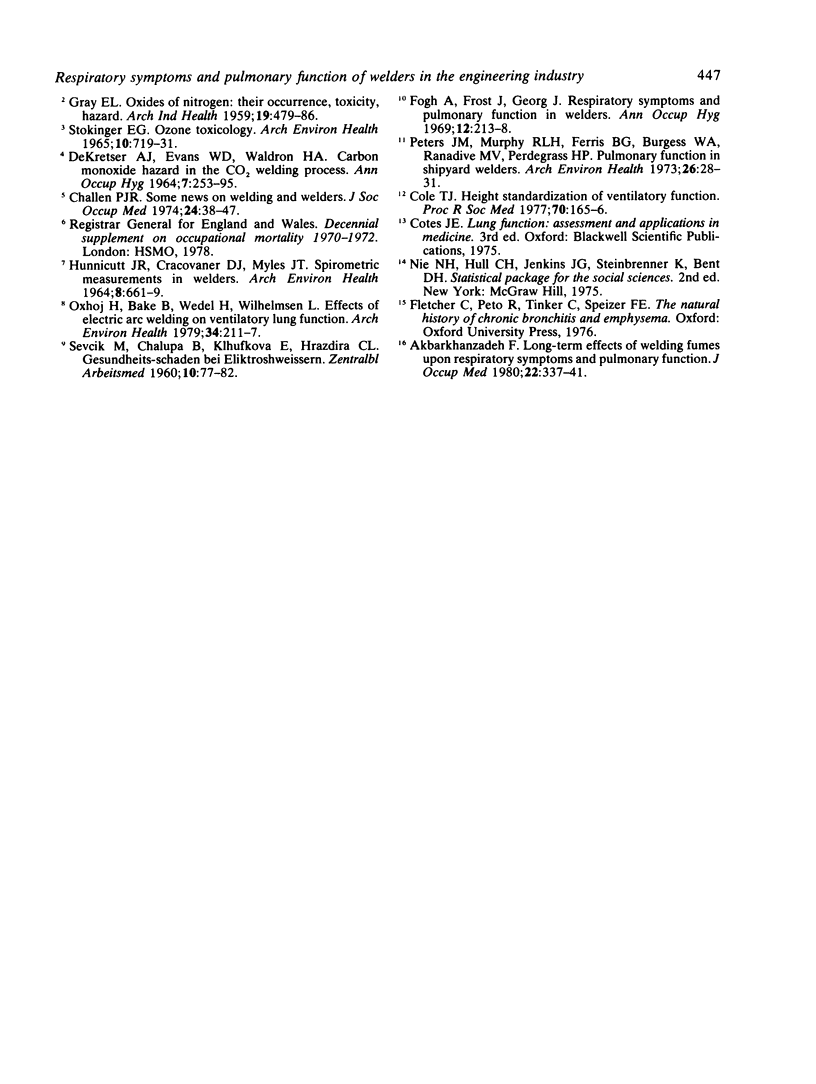
Selected References
These references are in PubMed. This may not be the complete list of references from this article.
- Akbarkhanzadeh F. Long-term effects of welding fumes upon respiratory symptoms and pulmonary function. J Occup Med. 1980 May;22(5):337–341. doi: 10.1097/00043764-198005000-00007. [DOI] [PubMed] [Google Scholar]
- Cole T. J. Height standardization of ventilatory function. Proc R Soc Med. 1977 Mar;70(3):165–166. [PMC free article] [PubMed] [Google Scholar]
- DEKRETSER A. J., EVANS W. D., WALDRON H. A. CARBON MONOXIDE HAZARD IN THE CO2 ARC-WELDING PROCESS. Ann Occup Hyg. 1964 Sep;7:253–259. doi: 10.1093/annhyg/7.3.253. [DOI] [PubMed] [Google Scholar]
- Fogh A., Frost J., Georg J. Respiratory symptoms and pulmonary function in welders. Ann Occup Hyg. 1969 Oct;12(4):213–218. doi: 10.1093/annhyg/12.4.213. [DOI] [PubMed] [Google Scholar]
- GRAY E. L. Oxides of nitrogen: their occurrence, toxicity, hazard; a brief review. AMA Arch Ind Health. 1959 May;19(5):479–486. [PubMed] [Google Scholar]
- HUNNICUTT T. N., Jr, CRACOVANER D. J., MYLES J. T. SPIROMETRIC MEASUREMENTS IN WELDERS. Arch Environ Health. 1964 May;8:661–669. doi: 10.1080/00039896.1964.10663737. [DOI] [PubMed] [Google Scholar]
- Oxhoj H., Bake B., Wedel H., Wilhelmsen L. Effects of electric arc welding on ventilatory lung function. Arch Environ Health. 1979 Jul-Aug;34(4):211–217. doi: 10.1080/00039896.1979.10667400. [DOI] [PubMed] [Google Scholar]
- Peters J. M., Murphy R. L., Ferris B. G., Burgess W. A., Ranadive M. V., Perdergrass H. P. Pulmonary function in shipyard welders: an epidemiologic study. Arch Environ Health. 1973 Jan;26(1):28–31. doi: 10.1080/00039896.1973.10666214. [DOI] [PubMed] [Google Scholar]
- SEVCIK M., CHALUPA B., KLHUFKOVA E., HRAZDIRA C. L. [Injuries to health in electric welders]. Zentralbl Arbeitsmed. 1960 Apr;10:77–82. [PubMed] [Google Scholar]
- STOKINGER H. E. OZONE TOXICOLOGY. A REVIEW OF RESEARCH AND INDUSTRIAL EXPERIENCE: 1954-1964. Arch Environ Health. 1965 May;10:719–731. doi: 10.1080/00039896.1965.10664082. [DOI] [PubMed] [Google Scholar]


